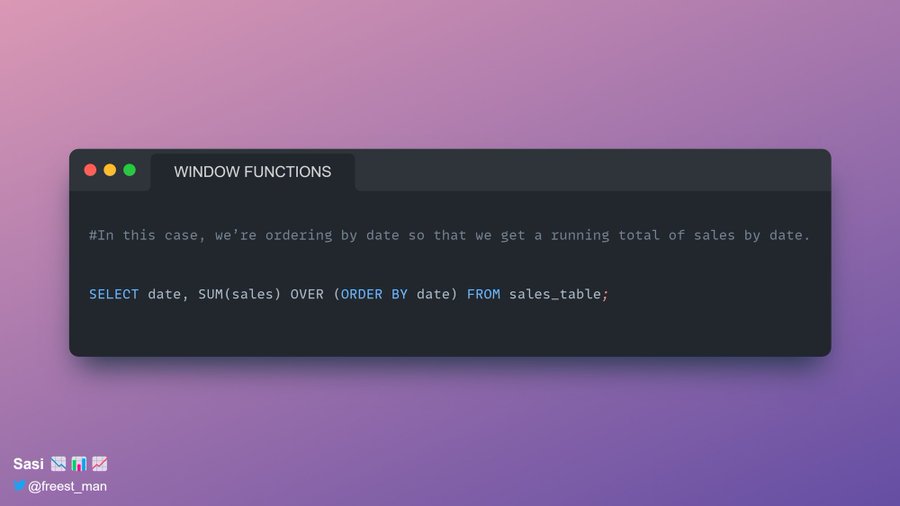- Data Continuum
- Posts
- Window Function opens so many avenues in SQL
Window Function opens so many avenues in SQL
They are too good to ignore
What is "Window Function" in SQL?
The "window" in "window function" refers to a set of rows.
Window functions are a powerful tool in SQL that allows you to perform calculations over a set of rows, called a window, that is related to the current row.
In SQL, window functions are used to perform calculations on a set of rows and return multiple rows for each group.
They are distinguished from other SQL functions by the presence of an OVER clause.
Window functions are similar to aggregate functions, but they do not collapse the result of the rows into a single value.
Instead, all the rows maintain their original identity, and the calculated result is returned for every row. Some common use cases for window functions include calculating running totals, rankings, and moving averages.

To use a window function, you need to specify the function name followed by an OVER() clause.
The OVER() clause defines the window of rows that the function will operate on.
For example, to calculate a running total of sales by date, you could use the SUM() function with an OVER() clause like this:

The ORDER BY clause within the OVER() clause specifies the order in which the rows should be processed.
In this case, we’re ordering by date so that we get a running total of sales by date.
You can also use PARTITION BY within the OVER() clause to divide the rows into partitions to which the window function will be applied.
For example, to calculate a running total of sales by date and store, you could use:

Another useful window function is RANK().
This function assigns a rank to each row within the window based on the values in one or more columns. For example, to rank sales by store and date, you could use:

Another useful window function is LAG().
This function allows you to access data from a previous row within the window.
For example, to calculate the difference in sales between two consecutive dates for each store, you could use:

There are many other window functions available in SQL, including LEAD(), FIRST_VALUE(), LAST_VALUE(), and more.
These functions provide powerful tools for analyzing and manipulating data in SQL.
Reply